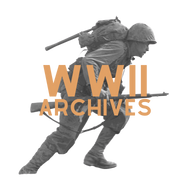WWII Archives:Multimedia Guide: Difference between revisions
From WWII Archives
Paul Sidle (talk | contribs) No edit summary |
Paul Sidle (talk | contribs) No edit summary |
||
| Line 4: | Line 4: | ||
===Which scanner to use?=== | ===Which scanner to use?=== | ||
[[File:Scanner_Example_Multimedia_Guide.png|right|300px]] | |||
When scanning documents and such, it is highly recommended to do so with a professional scanner instead of a printer scanner, as those are lower in quality. You want to digitize one such as the Epson V600, or if you get access to an archive facility with one, then it is ideal to use one. | When scanning documents and such, it is highly recommended to do so with a professional scanner instead of a printer scanner, as those are lower in quality. You want to digitize one such as the Epson V600, or if you get access to an archive facility with one, then it is ideal to use one. | ||
| Line 12: | Line 13: | ||
===Set resolution/DPI=== | ===Set resolution/DPI=== | ||
When scanning, the recommended resolution to scan | When scanning, the recommended resolution to scan is 800 (it still gets details and loads quicker). 1600 is acceptable if it is necessary, and only go up to 4200 for something truly important. Do not scan under 800 dpi. | ||
===Scan every part=== | ===Scan every part=== | ||
[[File:Photographe de Paul Edouard Clément Lajule dans son uniforme militaire français.pdf|left|150px]] | |||
When scanning/digitizing something such as a document, photograph, item, etc, you want to make sure that the entirety of the thing being digitized in question is within view of the scan, as well as the entire thing scanned. For example, if you are scanning a letter in a scanner, you want to make sure that you can see the entirety of the letter, and some of the white background behind the letter around it. You also want to scan every side, even if there is nothing on one side, you still scan it (this is especially if you are scanning photographs with nothing on the back). Again, make sure the background is visible, and '''SCAN ALL SIDES'''. | When scanning/digitizing something such as a document, photograph, item, etc, you want to make sure that the entirety of the thing being digitized in question is within view of the scan, as well as the entire thing scanned. For example, if you are scanning a letter in a scanner, you want to make sure that you can see the entirety of the letter, and some of the white background behind the letter around it. You also want to scan every side, even if there is nothing on one side, you still scan it (this is especially if you are scanning photographs with nothing on the back). Again, make sure the background is visible, and '''SCAN ALL SIDES'''. | ||
===Do not modify scanned files=== | ===Do not modify scanned files=== | ||
[[File:Laissez-Passer-Ouest de Raymond Auguste Traumann du 28 Juillet 1941.pdf|right|150px]] | |||
It is unfortunate that it needs to be said but, '''DO NOT MODIFY SCANNED FILES AFTER OR WHILE DIGITIZING'''. Do not change the color or other image settings in photoshop, any kind of editor. The purpose is to try and get as accurate as possible of a scan of the object in question, so even though every scanner has some problems in some way, it is only one layer removed from what the original object looks like. However, if you start trying to edit the image, it will add another layer of uncertainty as to how the original actually looked. Plus the editing is based on your bias of what it should look like. Even if the thing you are digitizing is something such as a faded photograph, upload the original version of the scan instead of an edited one anyways. You can download the original and modify it for your own liking. A possible future side-by-side upload might be created, but even then for now only upload the original non-modified scan. | It is unfortunate that it needs to be said but, '''DO NOT MODIFY SCANNED FILES AFTER OR WHILE DIGITIZING'''. Do not change the color or other image settings in photoshop, any kind of editor. The purpose is to try and get as accurate as possible of a scan of the object in question, so even though every scanner has some problems in some way, it is only one layer removed from what the original object looks like. However, if you start trying to edit the image, it will add another layer of uncertainty as to how the original actually looked. Plus the editing is based on your bias of what it should look like. Even if the thing you are digitizing is something such as a faded photograph, upload the original version of the scan instead of an edited one anyways. You can download the original and modify it for your own liking. A possible future side-by-side upload might be created, but even then for now only upload the original non-modified scan. | ||
====Color cards==== | ====Color cards==== | ||
| Line 23: | Line 26: | ||
===Saving the scanned files=== | ===Saving the scanned files=== | ||
When you are saving the scan or digitized file, you want the scan to be in a .tif or .tiff file format. If you can't do that do .png. DO NOT SAVE AS JPG OR JPEG. Jpeg images are usually meant to be compressed and so with every time transferred and compressed, deteriorate in quality. Just avoid saving as a jpeg as much as possible | When you are saving the scan or digitized file, you want the scan to be in a .tif or .tiff file format. If you can't do that do .png. '''DO NOT SAVE AS JPG OR JPEG'''. Jpeg images are usually meant to be compressed and so with every time transferred and compressed, deteriorate in quality. Just avoid saving as a jpeg as much as possible | ||
====Combining scans into PDF files==== | ====Combining scans into PDF files==== | ||
| Line 50: | Line 53: | ||
====Adobe Acrobat==== | ====Adobe Acrobat==== | ||
Here is a tutorial on how to do it in Adobe Acrobat: https://www.youtube.com/watch?v=k7LsOMt3kNQ | Here is a tutorial on how to do it in Adobe Acrobat: https://www.youtube.com/watch?v=k7LsOMt3kNQ | ||
==Filming, taking photos, etc== | |||
[[File:Main Page Guides Image.png|200px|left]] | |||
===What device to use=== | |||
If you are filming an interview or something else, the ideal thing to use is a dedicated camcorder, digital camera, or a phone (unless it is terrible quality then attempt to find something else). | |||
It is also advised for interviews to buy a microphone, charger (if your battery runs out faster) | |||
===.MOV and HEIC file format=== | |||
On apple devices, videos are saved as the .MOV file format and images the .HEIC format. Unfortunately these aren't viewable on the WWII Archives in those formats, therefore unless if you don't care for playing or seeing the video/image on the Archives, for .MOV file formats it is better to convert it to mp4, and for images .png (You can also try tif/tiff and in many cases you will be putting it into PDF format so it won't matter much in this case). | |||
| Line 57: | Line 77: | ||
====Uploading to the Internet Archive for things over 4 Gb in size==== | ====Uploading to the Internet Archive for things over 4 Gb in size==== | ||
If the file that you are uploading surpasses the | If the file that you are uploading surpasses the 1Gb size limit, then you will not be able to upload on this site. Instead, if you need to upload something that is over 1 Gb, then do so on the Archive.org website (the organization that runs the Wayback Machine). Just sign up, and then upload. It is suggested that you link to the files on the articles on the WWII Archives that are related to those digitized items. For example, if you did an interview with someone that is over 1 Gb in size, and upload it to the Internet Archive, then you will link/source the uploaded interview on the article page of the person interviewed. Typically if it is a document, photograph, etc then you will link it to the category page and put a link to it on the category page on the WWII Archives. | ||
===Setting the license and ownership=== | ===Setting the license and ownership=== | ||
Revision as of 22:43, 21 August 2023
Welcome to the WWII Archives Multimedia Guide! This guide is intended to lay out the rules, advice, and regulations that are expected when uploading and managing files on the WWII Archives. Before you start to upload or digitize anything please read this Guide.
Scanning and digitizing
Which scanner to use?
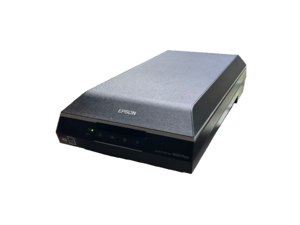
When scanning documents and such, it is highly recommended to do so with a professional scanner instead of a printer scanner, as those are lower in quality. You want to digitize one such as the Epson V600, or if you get access to an archive facility with one, then it is ideal to use one.
Clean scanner before you scan, and have a clean area around it
Make sure that there isn't any kind of dust, hair, smudges, or anything else on the scanning glass for scanning, otherwise it might disrupt your scan. One thing that is suggested for use is a compressed air dusting can to spray on the glass every few scans. Also it is highly suggested to have a clean space around your scanning area, and to absolutely not have food and drinks around the scanner or things being scanned. It is also recommended to be wearing gloves when handling most scanning material, especially photographs and even older items.
Set resolution/DPI
When scanning, the recommended resolution to scan is 800 (it still gets details and loads quicker). 1600 is acceptable if it is necessary, and only go up to 4200 for something truly important. Do not scan under 800 dpi.
Scan every part
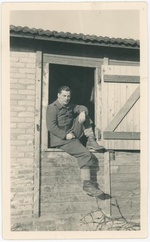
When scanning/digitizing something such as a document, photograph, item, etc, you want to make sure that the entirety of the thing being digitized in question is within view of the scan, as well as the entire thing scanned. For example, if you are scanning a letter in a scanner, you want to make sure that you can see the entirety of the letter, and some of the white background behind the letter around it. You also want to scan every side, even if there is nothing on one side, you still scan it (this is especially if you are scanning photographs with nothing on the back). Again, make sure the background is visible, and SCAN ALL SIDES.
Do not modify scanned files
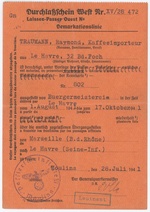
It is unfortunate that it needs to be said but, DO NOT MODIFY SCANNED FILES AFTER OR WHILE DIGITIZING. Do not change the color or other image settings in photoshop, any kind of editor. The purpose is to try and get as accurate as possible of a scan of the object in question, so even though every scanner has some problems in some way, it is only one layer removed from what the original object looks like. However, if you start trying to edit the image, it will add another layer of uncertainty as to how the original actually looked. Plus the editing is based on your bias of what it should look like. Even if the thing you are digitizing is something such as a faded photograph, upload the original version of the scan instead of an edited one anyways. You can download the original and modify it for your own liking. A possible future side-by-side upload might be created, but even then for now only upload the original non-modified scan.
Color cards
Since there are many scanners out there that don't exactly capture the exact color of the thing you are digitizing, you can use put a color correction card in the digitization, although you will use that scanned correction card to add as a page to the pdf file of the digitized document. Although it is not absolutely required to have a correction card.
Saving the scanned files
When you are saving the scan or digitized file, you want the scan to be in a .tif or .tiff file format. If you can't do that do .png. DO NOT SAVE AS JPG OR JPEG. Jpeg images are usually meant to be compressed and so with every time transferred and compressed, deteriorate in quality. Just avoid saving as a jpeg as much as possible
Combining scans into PDF files
For every case after saving your files while digitizing, you will need to combine the scans that each pertain to each document. For example if you scanned a photograph, you would have two scans, one of the front side, and another of the other side. However you cannot just do any method of combining your scans into a pdf, as most of the ways that are presented online are meant for printing, and create white boundaries and don't save the quality of the scans. The following are the different methods that you must follow when creating a PDF based on the options/device that you have.
Mac OS
For Mac OS, there isn't a complete tutorial on the method of creating a pdf that is required. But in any case here are some videos: https://www.youtube.com/watch?v=bnHjzbmEr4o https://www.youtube.com/watch?v=Hf0kI8leZ-8
Here are the steps: 1, Either select all of the images you are turning into a pdf, or just select one of them and click on it. 2, Click on the dropdown in between the red, yellow, and green dots, and the title of the image file(s) 3, click on "Thumbnails" 4, if you had selected all the files selected before you opened them in Preview, then you don't need to do steps 2 and 3. 5, Select all of the files on the left side (in the Thumbnails section) 6, Go to the top of your screen, click on "File", then click on "Export..." or "Export the selected images" 7, If there is a dropdown to convert to different file types, then select PDF, otherwise there shouldn't be any selection, and you choose the folder to put your pdf, and click on "Save" 8, Then you will go to the folder you placed the pdfs, and there should be a pdf file of each scan in there. Click on the front scan, then go to "Thumbnails" again, and then you will drag the other pdf files from the folder into the side bar. You will then position them in the correct order, and then Command+S to save.
Note that while doing this there are some metadata/information about the file (not the actual image just information about it so its fine) that is lost, that you will need to indicate as presented in the section about adding metadata/information.
Windows
Here is the tutorial for Windows: https://www.youtube.com/watch?v=aNmh9T6WbUE
Adobe Acrobat
Here is a tutorial on how to do it in Adobe Acrobat: https://www.youtube.com/watch?v=k7LsOMt3kNQ
Filming, taking photos, etc
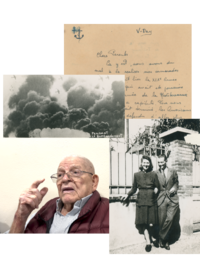
What device to use
If you are filming an interview or something else, the ideal thing to use is a dedicated camcorder, digital camera, or a phone (unless it is terrible quality then attempt to find something else). It is also advised for interviews to buy a microphone, charger (if your battery runs out faster)
.MOV and HEIC file format
On apple devices, videos are saved as the .MOV file format and images the .HEIC format. Unfortunately these aren't viewable on the WWII Archives in those formats, therefore unless if you don't care for playing or seeing the video/image on the Archives, for .MOV file formats it is better to convert it to mp4, and for images .png (You can also try tif/tiff and in many cases you will be putting it into PDF format so it won't matter much in this case).
Uploading
Places to upload
Generally, and in most cases, you want to upload through Special:UploadWizard on this website. However, in the rare case that it might not be working, you might want to try Special:Upload, which you will notice doesn't have a loading bar, and will in most cases probably not work.
Uploading to the Internet Archive for things over 4 Gb in size
If the file that you are uploading surpasses the 1Gb size limit, then you will not be able to upload on this site. Instead, if you need to upload something that is over 1 Gb, then do so on the Archive.org website (the organization that runs the Wayback Machine). Just sign up, and then upload. It is suggested that you link to the files on the articles on the WWII Archives that are related to those digitized items. For example, if you did an interview with someone that is over 1 Gb in size, and upload it to the Internet Archive, then you will link/source the uploaded interview on the article page of the person interviewed. Typically if it is a document, photograph, etc then you will link it to the category page and put a link to it on the category page on the WWII Archives.
Setting the license and ownership
If you were the owner of the document that is being uploaded, it is highly suggested that you use the "This file isn't my work" option, as you will be able to indicate where the document comes from and how it came into your ownership, as well as being able to set the license that you want to put on there. Otherwise if you do not own the files being uploaded, then you will indicate that they are not of your ownership, where they come from, and what the license for those files are as indicated from the source you got them from.
Categories
Categories are very important to organization of files. Categories for files are more for collections of documents found. For example, if you had an old packet in your grandparent's attic that pertain to things related to your family during the war, and you digitize them, you will create a category with the same name as the label on the packet or relatively the same name, and the digitized documents that were in that packet will go in that category. If you find a stack inside that packet, then you should keep it in that order, scan it in that order, and in the name of each digitized file uploaded, there should be a number of where that document was in the order of the stack. For example one might be: "57 - Letter from John Smith to his parents 3 March 1944", which would indicate that this document was number 57 in the order of the stack, and that it is a letter from a man named John Smith to his parents that is dated to 3 March 1944. For the most part this number organization should organize the category from 1 to the last document in that stack.
Managing uploaded files
Adding metadata/information not shown or lost in the file
As mentioned earlier while converting the tif files into pdfs, a lot of the metadata will be lost. Alternatively, there is information that won't be put in the metadata in the first place. Therefore it is your job to add the additional useful information pertaining to those files in the description. Things such as date digitized, what scanner was used, what program was used with the scanner, what resolution (dpi) was it scanned at, did you rotate any of the pages of the pdf file (sometimes some documents have multiple pages that open up like a book and are too big to be scanned horizontally, and so you will need to scan the entire thing vertically. This is one of the few times you are allowed to do modifications, but even for modifications it is very helpful to indicate what modifications you made, but still don't do image editing), and more. If you are uploading an interview, it might be helpful to indicate the location, what you recorded it on, etc that isn't indicated in the video.
Indicating dimensions/size
As we're trying to digitize and get a complete picture of what the object were digitizing is, it is obviously important to note down the dimensions and size of the object. When you do this, absolutely do it in metric, because it has more precision than imperial does. You can add an indicator of what it looks like in imperial thats fine, but always have it and do it in metric first (note that the size usually indicated on scanning programs in dimensions are almost always not actual measurements of the scan area, rather for printing among other things, so don't use that).
Other description
Of course other than the stuff mentioned above, there is more description about the thing itself, particularly about the document/object as well as analyzing it and transcribing it. In particular for transcribing things, you will use either of two different Templates. The first is "Single language document quote", which is for documents that are only in one language. The second is: "Double language document quote", which is used for transcribing documents with one or more languages used other than English.
Uploading new versions of a file
This is only really necessary if you made an error in the original management of the files or scans of the documents. Another is if you have an even better scan of the document(s) in question than you perviously had. Any of this kind of stuff should be indicated in the description of what changed.
